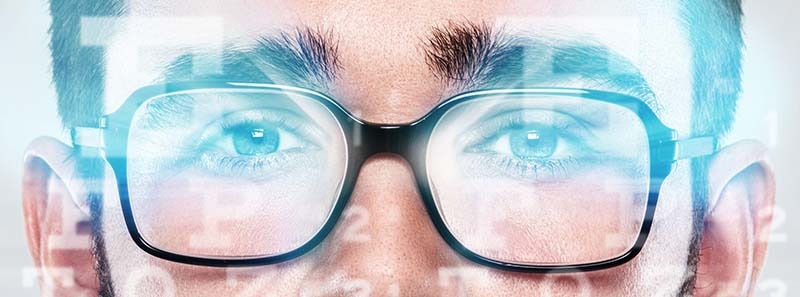
In recent years, digital devices have dominated our everyday lives. Concerns about the potential health hazards arise with the coming of this digital era.
One of the hot topics is the potential damage to the retina caused by blue light emitted by electronic devices, and subsequently, numerous anti-blue light products have been introduced to the market. Let’s take a deeper look into these blue lights and how can we protect our eyes better.
What is Blue Light?
The visible light we seen is actually a wave that is comprised of different colours of light such as red, yellow, green and blue.
At the same time, the energy carried by the wave is inversely proportional to its wavelength. Therefore, the red side of the visible light which has longer wavelength carries less energy, while the blue side which has shorter wavelength carries more energy. That’s why blue light is also called ‘High energy visible light (HEV)’.
Before the digital era, we were already exposed under blue light coming from its natural source: sunlight. Nowadays we are bombarded with more artificial blue light sources in our daily lives including the display screens of smartphones, computer, laptops and other digital devices as well as energy-efficient lighting such as LED light.
These devices emit higher intensity blue wavelength than other wavelengths. Despite the fact that the artificial blue light intensity is still a lot weaker than sunlight, people are now spending longer time in close proximity with electronic devices which intensifies the blue light exposure, creating tangible health concerns.

Visible light spectrum. Image adopted from: http://www.allaboutvision.com/cvs/blue-light.htm
Blue Light is Both a Blessing and a Curse
As the awareness towards blue light increases, people have been trying to avoid as much blue light as possible. However, suitable amount of blue light is essential to our vision and health. First, blue is one of the 3 primary colours forming our colour vision.
Completely removing blue colour will make everything yellowish and distort our colour perception. Second, blue light perception helps people maintaining alertness and memory. Appropriate amount of blue light is also crucial to regulate our biological clock, but excessive blue light before sleep can disrupt it.
Since blue light carries higher amount of energy, people postulate that blue light can potentially damage retinal cells. Some animal studies demonstrated that excessive exposure under blue light could result in cell injury at the retina.
Other researchers also pointed out that blue light exposure may increase the risk of having age-related macular degeneration (AMD) which can lead to severe vision loss, but it is still waiting stronger evidence to prove so. On the other hand, blue light scatters more easily than other light colours. The scattered blue light emitted from digital screens degrade visual signal and may result in eyestrain.
High Energy Blue Light VS Blue Colour VS Blue Colour Light
High energy blue light may be potentially harmful to our eyes. But some may also wonder if blue colour objects are also being harmful. Actually the harmful blue light refers to the high energy short wavelength with strong light intensity coming from the light source.
A blue object merely reflects blue wavelengths in a random direction when light shines on it. It will not emit light by itself and the blue wavelength reflected has low energy intensity.
How about blue colour light? That would depend on the light source. If it is formed by normal white light but with a blue filter, the blue filter only allows blue wavelength to pass through but it will not increase the amount of blue wavelength.
Looking at light with blue filter will not increase the amount of blue light entering the eye compare to without the filter. If it is an LED light source, it will still emit high energy blue light even the light looks white.

Spectral power distributions of daylight and white LED. Image adopted from: https://www.slrlounge.com/gear-review-fiilex-led-light/
Protecting our Eyes From Harmful Blue Light
In the modern world, it is practically impossible to stay away from all blue light sources. In our retina, retinal pigment and cell metabolism give partial protection from blue wavelength. The next generation of LED light also attempts to reduce its blue light emission. But in order to avoid receiving too much blue light, it is better to use protective products.
However, it is not as simple as using anti-blue filter to cut away all blue light otherwise it will disrupt visual and cognitive function as well as the biological clock. There are some ophthalmic lenses in the market which can block the excessive HEV lights without altering the visual performance, night vision and sleep quality as proven by research studies.
Also, appropriate blue-blocking lenses cut away the scatter-prone blue lights and help reducing eyestrain when using digital devices. However, blue-blocking lenses give slightly more yellowish vision which may be significant for designers and artists. But generally it will not affect colour perception much.
By Jeff Tang, Registered (Part I) Optometrist
Eyecare information by Swisscoat Vision Centre
Address : G/F Yuen Yick Building, 27-29 Wellington Street, Central, Hong Kong
Appointment :+852 3579 4763
Website : www.swisscoat.com
